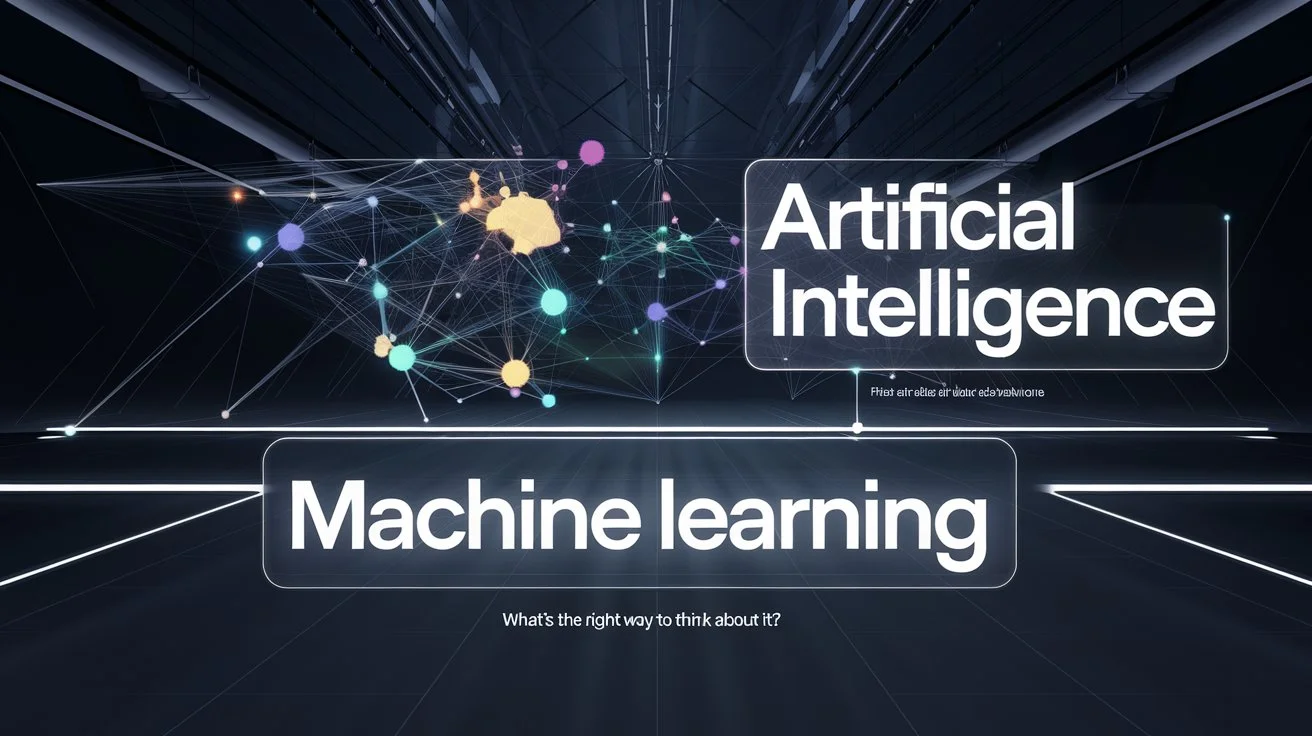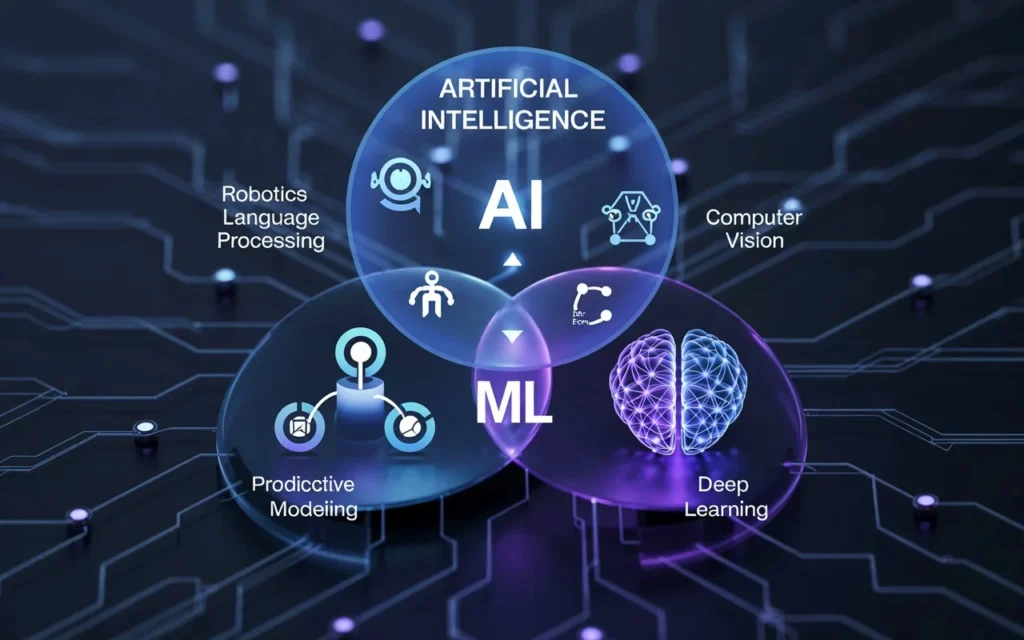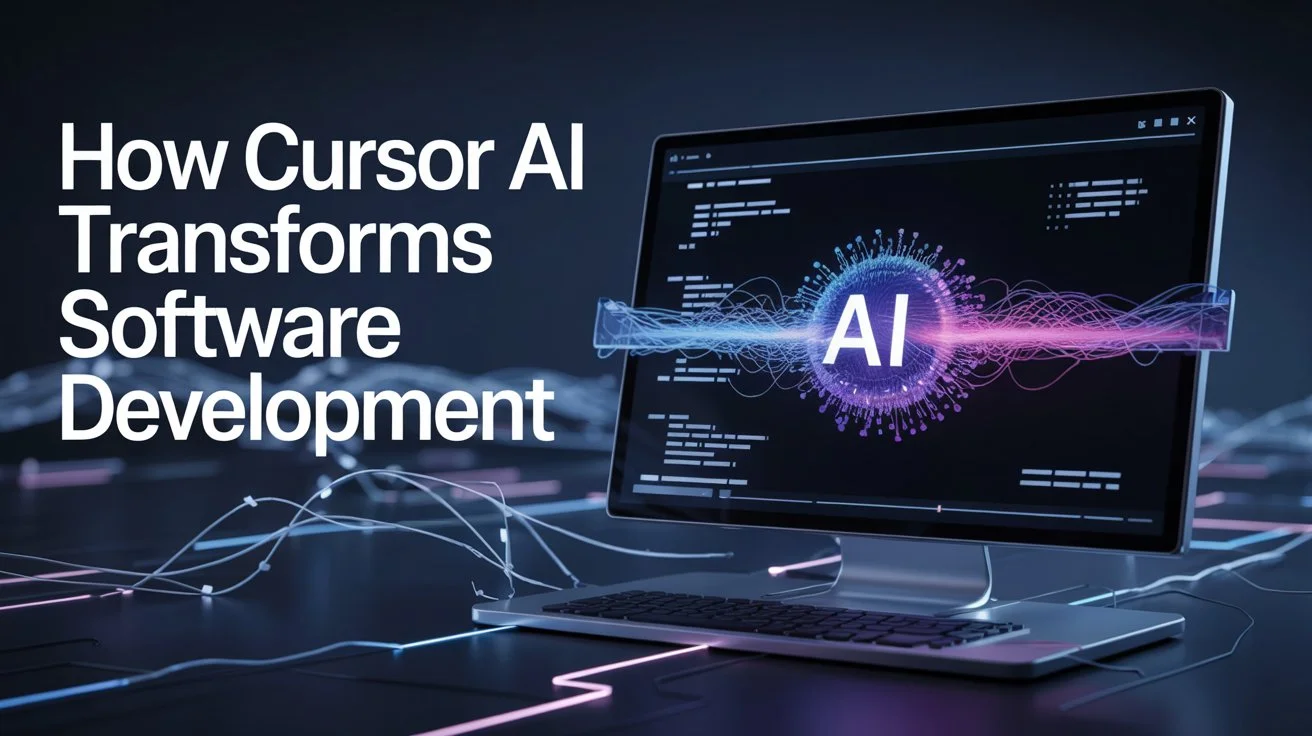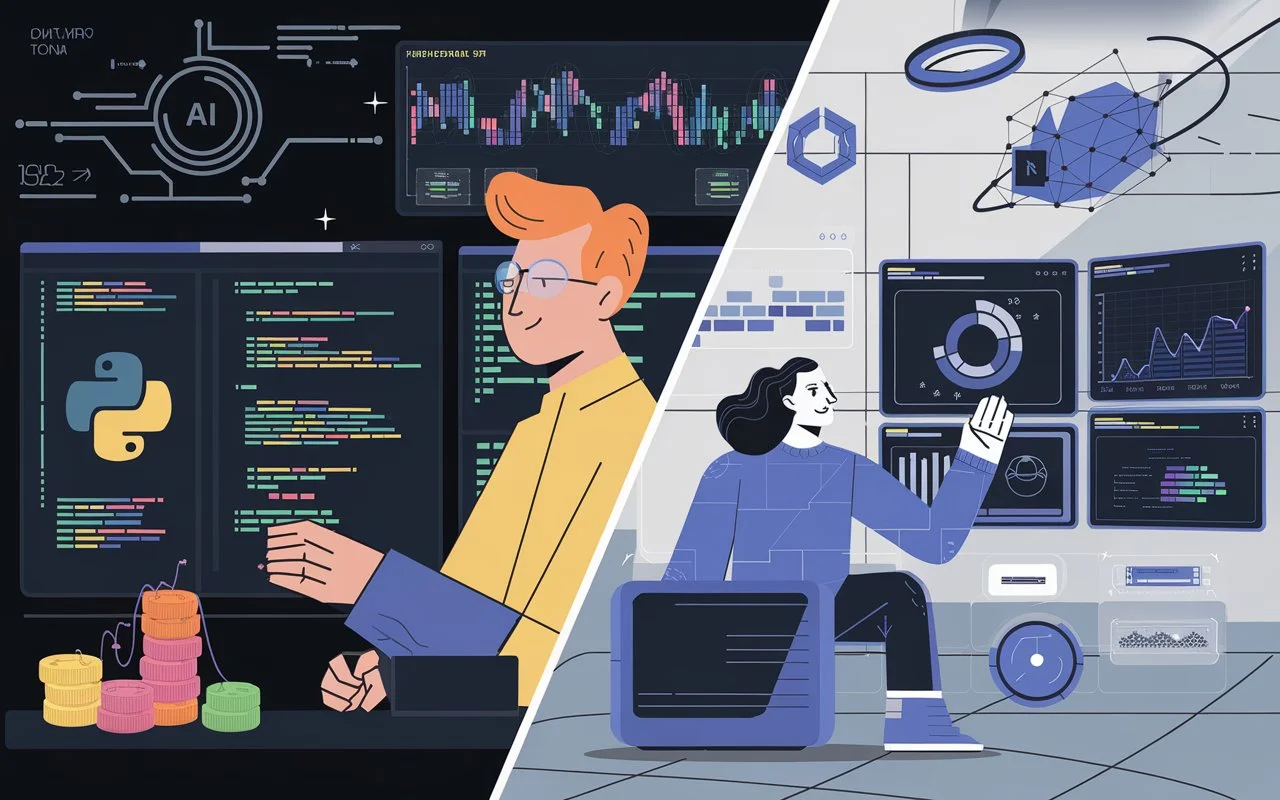
AI vs ML: Understanding the Key Differences & How They Work
Artificial Intelligence (AI) and Machine Learning (ML) are two of the most commonly used buzzwords in the world of technology today. They are often used interchangeably, leading to confusion about their exact meanings and distinctions. Some people frame their relationship as AI vs. ML, while others assume AI equals ML. However, the reality is more nuanced. In this article, we will break down the differences between AI and ML, their relationship, and their individual capabilities, providing a clear understanding of these transformative technologies.
Defining Artificial Intelligence (AI)
Artificial Intelligence (AI) can be broadly defined as the ability of a system to mimic or exceed human intelligence. AI aims to develop machines that can perform tasks that typically require human cognitive abilities. These tasks may include problem-solving, reasoning, perception, and learning from experience.
Some of the core capabilities of AI include:
- Discovery: AI can find new insights or patterns from vast datasets, making sense of complex information.
- Inference: AI systems can infer conclusions from given data, even if certain information is not explicitly available.
- Reasoning: AI can logically process different pieces of information to arrive at intelligent conclusions.
AI is a broad field that encompasses various subfields, including Machine Learning, Deep Learning, Natural Language Processing (NLP), Computer Vision, and Robotics.
What is Machine Learning (ML)?
Machine Learning (ML) is a specific subset of AI that focuses on the ability of machines to learn from data without being explicitly programmed. Instead of being manually coded for every task, an ML system improves itself by recognizing patterns and making predictions based on past experiences.
Unlike traditional programming, where a developer writes detailed instructions for every possible scenario, ML algorithms adjust themselves based on the data they process. The more data provided, the better the system becomes at making predictions and decisions.
Types of Machine Learning
- Supervised Learning: In this approach, the algorithm is trained using labeled data. The system learns by mapping input data to the correct output with the help of predefined labels. For example, an ML model trained on labeled images of cats and dogs can classify new images accurately.
- Unsupervised Learning: Unlike supervised learning, this method does not use labeled data. Instead, the algorithm identifies patterns and structures within the dataset by itself. For example, customer segmentation in e-commerce, where an ML model groups customers based on their purchasing behavior, is a classic use case of unsupervised learning.
Machine Learning is a crucial aspect of AI, but it is not the only component. It is primarily used to enhance AI systems by enabling them to learn and adapt over time.

The Role of Deep Learning (DL) in Machine Learning
Deep Learning (DL) is a more advanced subset of Machine Learning that uses artificial neural networks to model complex patterns and relationships in data. Inspired by the human brain, deep learning algorithms consist of multiple layers of interconnected nodes, making them capable of solving intricate problems.
The key differentiator of Deep Learning is its ability to process vast amounts of unstructured data, such as images, audio, and natural language, without requiring extensive manual feature extraction. Some of the most notable applications of deep learning include:
- Image Recognition: DL models power facial recognition systems, medical image analysis, and autonomous vehicle navigation.
- Natural Language Processing (NLP): DL enables AI systems to understand and generate human-like text, as seen in virtual assistants like Siri and chatbots.
- Speech Recognition: DL-based models allow AI systems to transcribe and interpret spoken language with high accuracy.
One of the main challenges of Deep Learning is the “black box” problem, where it is difficult to understand how the model arrived at a particular decision. While DL is powerful, it remains an area of ongoing research to improve its interpretability and reliability.
Also Read: How Cursor AI Transforms Software Development
AI: The Superset of ML and More
While Machine Learning and Deep Learning are integral components of AI, they do not define AI entirely. AI encompasses a broader set of technologies, each contributing to intelligent system development. Some of these include:
- Natural Language Processing (NLP): This branch of AI enables machines to understand, interpret, and generate human language. NLP is used in chatbots, translation services, and sentiment analysis.
- Computer Vision: AI systems can analyze and interpret images and videos, allowing them to recognize faces, detect objects, and monitor surveillance footage.
- Speech Recognition & Text-to-Speech: AI can process spoken language and convert it into text, as well as generate human-like speech from written text, aiding accessibility and automation.
- Robotics: AI-driven robots can perform tasks that require physical movement, such as assembling products in factories, assisting in surgeries, and even autonomous navigation.
These fields highlight the diverse nature of AI beyond Machine Learning. While ML is a significant enabler, AI is a vast domain that encompasses various other intelligent functionalities.
The Correct Way to View AI vs. ML
The common misconception that AI equals ML is misleading. The correct way to visualize their relationship is through a Venn diagram, where:
- Machine Learning (ML) is a subset of Artificial Intelligence (AI).
- Deep Learning (DL) is a subset of Machine Learning (ML).
- AI includes other technologies such as NLP, Computer Vision, and Robotics beyond ML and DL.
Thus, when we engage with Machine Learning, we are working within the AI domain, but AI itself is a broader concept that extends beyond ML.
Conclusion
AI and ML are two closely related but distinct fields. AI is an overarching discipline that aims to replicate human intelligence, while ML is a specific approach that enables AI systems to learn from data. Deep Learning further refines ML by leveraging neural networks to process vast and complex datasets. Additionally, AI includes numerous other subfields, such as NLP, Computer Vision, and Robotics, that contribute to building intelligent systems.
Understanding the distinctions and relationships between AI, ML, and DL is crucial for anyone interested in technology, whether they are students, professionals, or enthusiasts. With AI-driven applications becoming an integral part of daily life, gaining clarity on these concepts helps in making informed decisions and leveraging these technologies effectively.
As AI continues to evolve, its integration with ML, DL, and other technologies will unlock new possibilities across various industries, from healthcare and finance to automation and entertainment. The journey of AI is still unfolding, and the future holds exciting advancements that will further redefine human-machine interactions.
Also Read: How to Learn Coding in 2025 – Roadmap for Beginners to Advanced Developers





